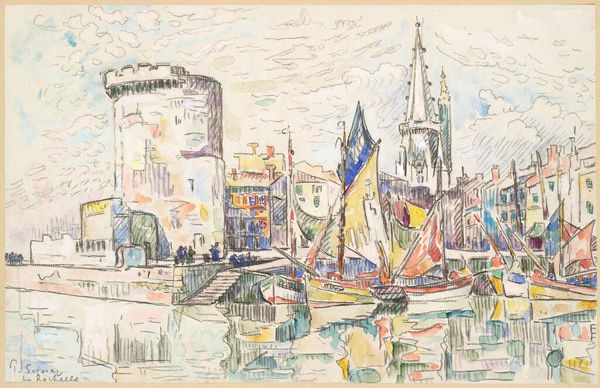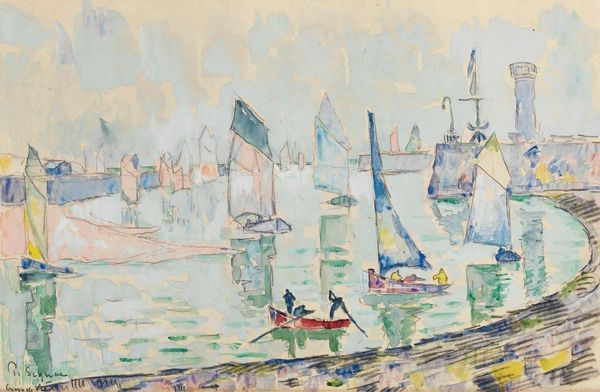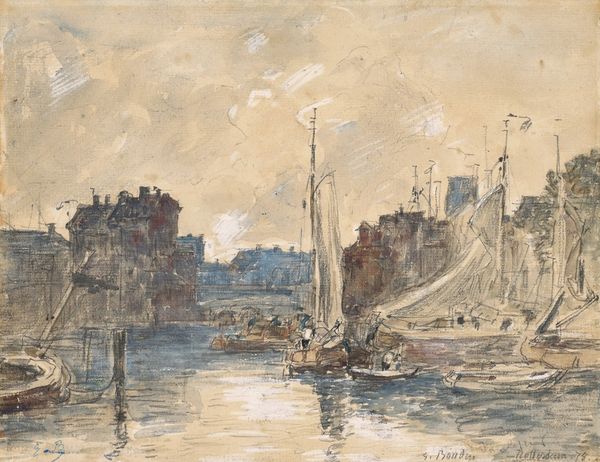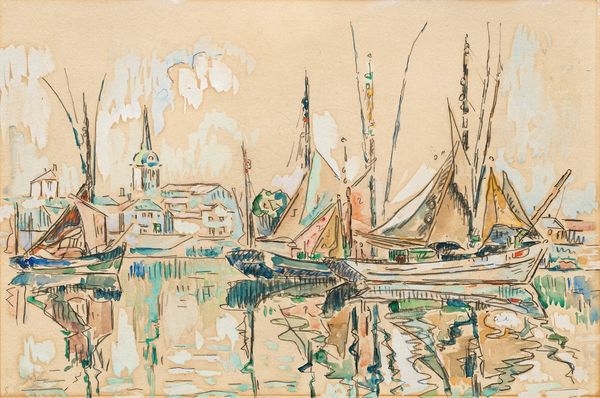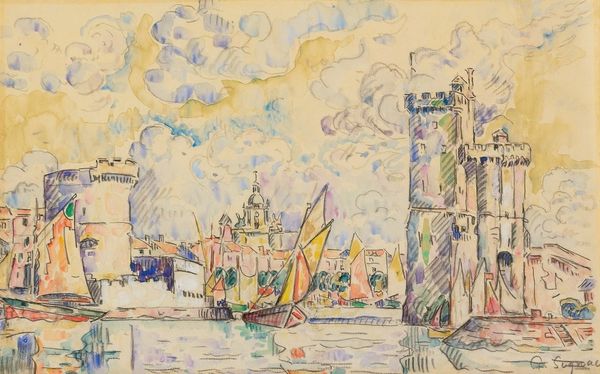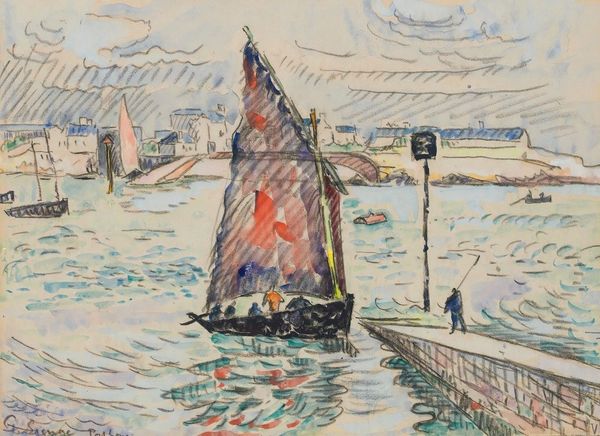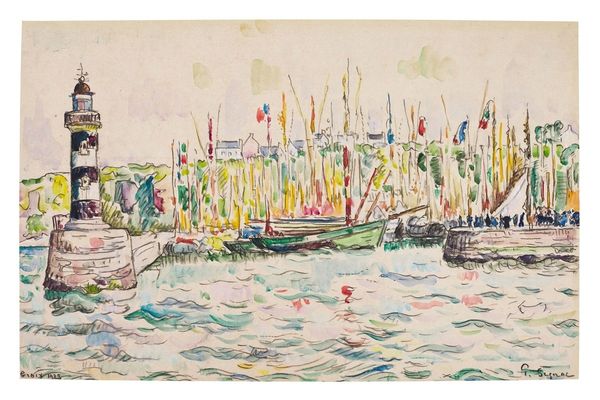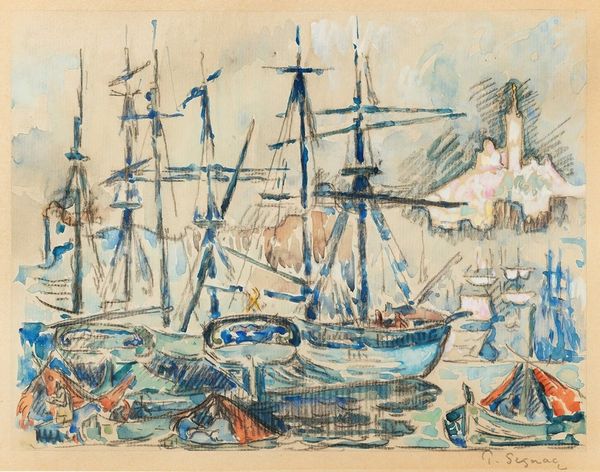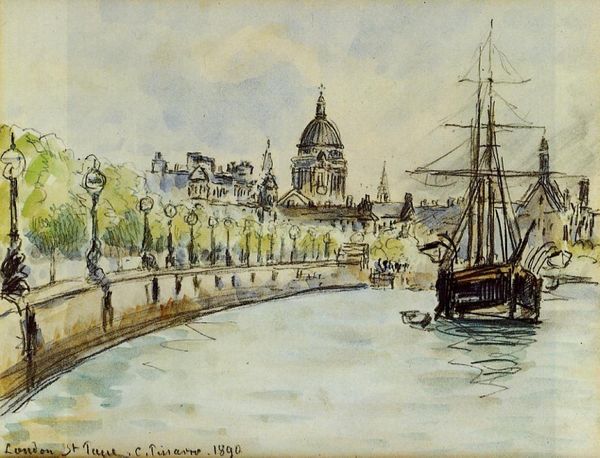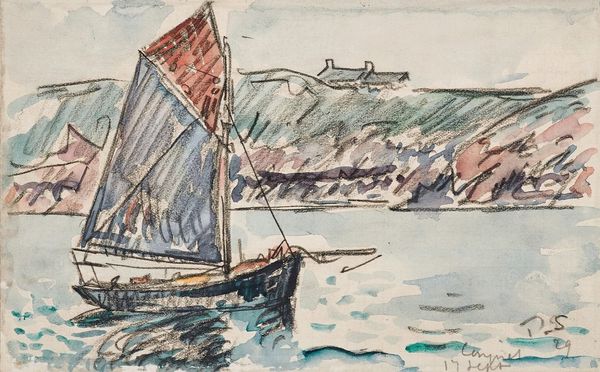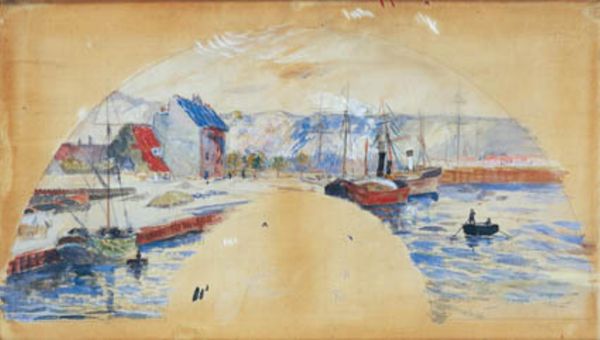
Copyright: Public Domain: Artvee
Curator: Upon viewing this watercolor, I am struck by how much light the artist manages to capture in a few strokes. There's a dreamlike, almost ethereal quality to it. Editor: That is a great observation. We're looking at "Sables D’olonne, Vue De Port," painted in 1913 by Paul Signac, a leading figure in the Neo-Impressionist movement. This plein-air watercolor offers a stunning glimpse of the port, encapsulating the transient nature of light and maritime life. Signac wasn’t just painting what he saw; he was theorizing color, imbuing each hue with emotional weight, much like his mentor, Georges Seurat. Curator: I am curious, what do you read into the prominence of boats within this composition? Their sails and hulls mirror each other across the water's reflection, their shape pointing toward the town on the right side, whose importance almost outweighs the emptiness of the sea itself? Editor: Considering Signac's political leanings, the sailboats in "Sables D’olonne" become potent symbols. Anarchists and avant-garde artists alike favored sailing. Signac sailed often; his yacht served as a portable studio, and in the early 20th century, yachting evoked leisure and freedom, thus it implicitly critiques the societal norms binding the working class. The reflections become almost like a doubled image of that sense of liberty, amplified but fragile. Curator: It is true; the water seems incredibly alive, dancing almost. However, to focus so heavily on class analysis might inadvertently downplay the deeply entrenched symbolic meaning attached to the sea, a concept permeating art from diverse epochs. It symbolizes both fertility and formlessness, refuge and wreckage. Even today, our language echoes the dichotomy of its potential; to be adrift in our thoughts or castaways, for example. These opposing realities co-exist within the liminal space where sea meets land, much as these yachts sit between stability and departure. Editor: Absolutely. Neo-Impressionism as a whole was invested in synthesizing subjective experience with a quasi-scientific approach to color theory, and Signac beautifully articulates these conflicting currents. Looking at the artwork, the way that social critique is aesthetically combined with timeless symbolism… it deepens the painting's capacity to speak across time. Curator: I concur entirely. I initially responded to the painting on a visceral level; now I can see these layers add immeasurable depth. Editor: Yes, seeing how historical context and symbolism inform each other reveals more layers within what seemed a spontaneous impression of a place.
Comments
No comments
Be the first to comment and join the conversation on the ultimate creative platform.
